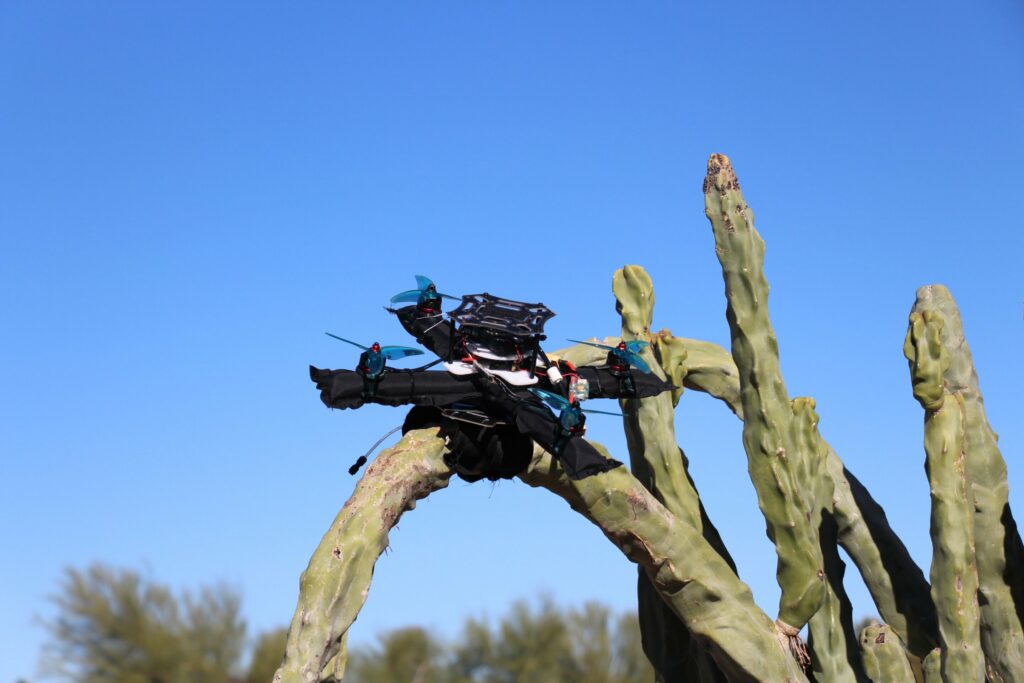Researchers at Arizona State University have developed a quadrotor drone with an inflatable frame that can be adjusted to recover from unexpected bumps and collisions.

Rescuing after disasters is a time-sensitive task. Emergency response teams must identify voids in the rubble before gas leaks, flooding, or shifting slabs endanger survivors. Technology plays a vital role in rescue operations; thermal imaging and listening devices seek signs of life. Drones can access hard-to-reach areas, but fragile designs restrict their usage. Drones crash in collapsed buildings due to rigid frames that can’t handle collisions with posts, beams, pipes or cables.
Professor Wenlong Zhang, an associate professor and robotics expert in the Ira A. Fulton Schools of Engineering at Arizona State University and his team have developed a quadrotor drone with an inflatable frame, adjustable for recovery from unexpected taps and thumps. The researchers believe drones should physically interact with their surroundings, not just avoid them. The soft bodies of drones offer resilience to collisions and material compliance for dynamic perching.
Birds land and perch by controlled collision, using compliant joints and soft tissues to absorb impact. Passive locking mechanisms in their feet grip irregular surfaces without muscular energy. Inspired by birds, the team made a fabric-based bistable grasper for their drone. It snaps shut upon landing, gripping objects of various sizes and shapes.
The gripper can perch on almost anything and doesn’t require power to hold its grip due to its bistable material. It remains closed without energy consumption but can retract pneumatically for takeoff. Unpowered, contact-reactive perching is crucial for long-lasting field operations. Drones can land wherever needed and then conserve battery life by turning off their rotors.
The researchers believe that the use of drones can be improved by their dynamic interaction with the environment, not only for search and rescue but also for monitoring forest fires, aiding military surveillance, and exploring other planets. Work on conformable and reconfigurable soft aerial robots leads to more innovative, bio-inspired designs with multiple functionalities.
Reference : A Soft-Bodied Aerial Robot for Collision Resilience and Contact-Reactive Perching, Soft Robotics (2023). DOI: 10.1089/soro.2022.0010






